How to fix or replace | heater blowers?
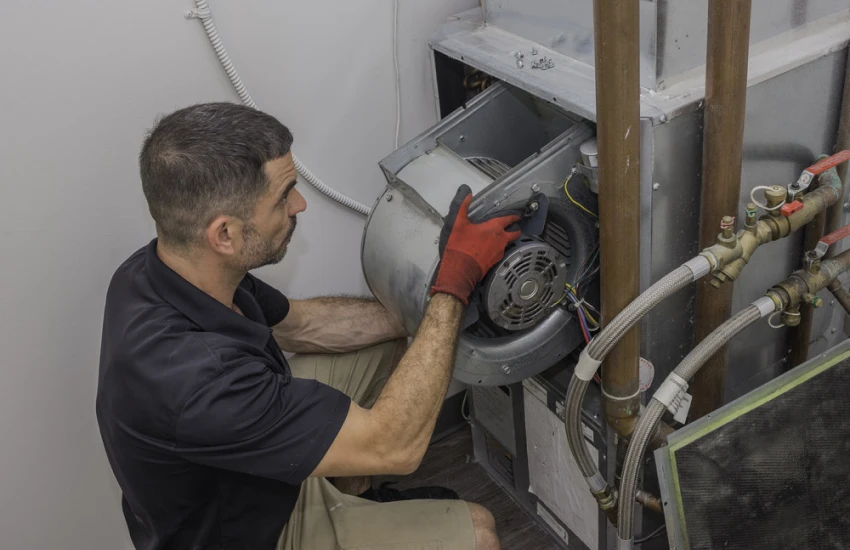
This comprehensive guide provides detailed information about heater blower repairs and replacement. From troubleshooting common issues to step-by-step maintenance procedures, learn when to tackle repairs yourself and when to seek professional help. Understand the signs of blower problems and how to maintain optimal heating performance.
How to fix or replace heater blowers?
That annoying rattle from your heater might be more than just a nuisance – it could be your blower motor telling you something’s wrong. The blower is essential to your heating system, responsible for pushing warm air throughout your home. When it’s not working right, your comfort and energy bills both take a hit.
Your fridge is a kitchen superstar as it keeps all your food fresh and drinks cold.
But does the fridge feel warm when you open it?
Is there water all over the floor?
Fridge issues are the worst!
Understanding Your Heater’s Blower System
The blower is essentially the heart of your heating system, circulating warm air through your home’s ductwork. It consists of several key components: the motor, fan belt (in older systems), wheel or squirrel cage, and housing unit. Understanding these parts helps identify where problems might be occurring.
Key components that commonly need attention:
- Blower motor
- Fan assembly
- Motor capacitor
- Bearings
- Drive belt (if applicable)
Common Blower Problems
Most blower issues announce themselves through specific symptoms. A properly working blower should operate quietly and deliver consistent airflow. Unusual noises, weak airflow, or complete failure are all signs something’s wrong.
The most frequent issues include worn bearings, loose components, electrical problems, or belt issues in older systems. Sometimes the problem is as simple as a clogged filter restricting airflow, while other times it might require complete motor replacement.
Signs Your Blower Needs Attention
Before your blower completely fails, it usually gives warning signs. Strange noises are often the first indicator – squealing might mean a belt problem while scraping or grinding usually indicates bearing issues. Pay attention to these early warnings to prevent more serious damage.
Warning signals to watch for:
- Unusual noises (squealing, grinding, rattling)
- Weak or inconsistent airflow
- Excessive vibration
- Higher than normal energy bills
- System cycling on and off frequently
Safety Precautions
Working with heating system components requires careful attention to safety. Before attempting any repairs, always disconnect power at both the unit and circuit breaker. Ensure you have adequate lighting and workspace. Remember that blower components can be sharp, so wear appropriate protective gear.
DIY Troubleshooting Steps
Some blower problems have simple solutions that homeowners can handle themselves. Start with the basics: check your filter, verify the power supply, and inspect visible components for obvious issues. Listen carefully to identify where unusual noises are coming from.
Basic maintenance tasks include:
- Replace or clean air filters
- Check and tighten loose components
- Clean the blower assembly
- Verify proper belt tension (if applicable)
Professional Repair Considerations
While some maintenance tasks are DIY-friendly, many blower repairs require professional expertise. Electrical issues, motor replacement, and major mechanical problems should be handled by qualified technicians. Attempting complex repairs without proper knowledge can lead to more extensive damage or safety hazards.
The Replacement Process
Sometimes replacement is more cost-effective than repair, especially with older units or when multiple components are failing. A complete blower replacement typically involves:
The basic process includes removing the old unit, preparing the mounting area, installing the new blower assembly, and ensuring proper electrical connections. Professional installation is recommended as proper alignment and wiring are crucial for efficient operation.
Understanding Repair Costs
Blower repair costs vary significantly depending on the problem and required parts. Minor repairs like belt replacement or bearing lubrication are relatively inexpensive. Motor replacement represents a more significant investment but is still usually more economical than replacing the entire heating system.
Maintenance for Prevention
Regular maintenance can prevent many common blower problems. Keep the area around your heating system clean and ensure good airflow. Regular filter changes prevent excess strain on the blower motor. Listen for changes in operating sound that might indicate developing problems.
Energy Efficiency Considerations
A properly functioning blower doesn’t just provide comfort – it affects your energy bills too. Modern blower motors often offer variable speeds, which can significantly improve efficiency. When replacing a blower, consider upgrading to a more efficient model if available for your system.
Professional Inspection
Annual professional inspections can catch developing problems before they become serious. A qualified technician can:
- Evaluate motor performance
- Check electrical connections
- Assess mechanical components
- Clean hard-to-reach areas
- Recommend preventive measures
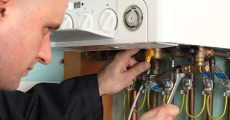
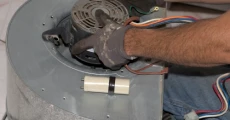
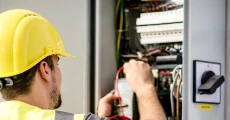
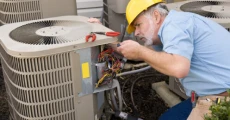
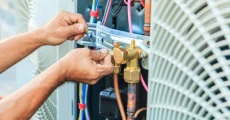
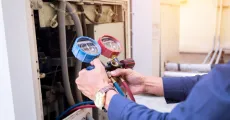
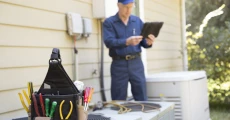
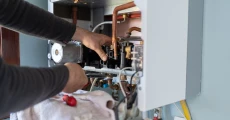
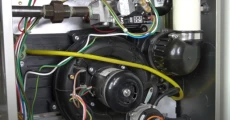
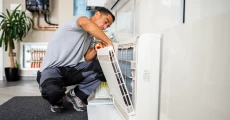
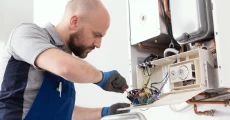
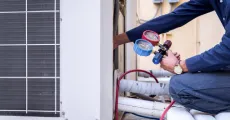
Takeaway
Understanding your heater’s blower system helps you maintain it properly and recognize when professional help is needed. While some maintenance tasks can be handled by homeowners, many repairs require technical expertise.
At CLT Appliance Repair, we specialize in comprehensive heater blower repair and replacement services. Our experienced technicians can quickly diagnose issues and provide efficient, lasting solutions. Don’t let blower problems leave you in the cold – contact us for professional service you can trust. We offer heating repair charlotte nc and free estimates to keep your heating system running smoothly.
FAQs
Most blower motors last 10-20 years with proper maintenance, but lifespan varies based on usage and care.
Noises often indicate mechanical problems like worn bearings, loose components, or belt issues. A professional inspection is recommended for proper diagnosis.
While possible, blower motor replacement requires technical knowledge and proper tools. Professional installation ensures safety and optimal performance.
Annual professional maintenance is recommended, along with regular filter changes every 1-3 months.
Weak airflow can result from dirty filters, duct problems, or failing motor components. Start with filter replacement and seek professional help if the problem persists.
Don't let a malfunctioning Heater disrupt your daily life. Contact CLT Appliance Repair today at 704-606-9043 to schedule your Heater repair service.
We'll have your Heater back to optimal performance in no time!
Dryer Repair Charlotte NC | Washing Machine Repair Charlotte NC | Refrigerator Repair Charlotte NC | Microwave Oven Repair Charlotte NC | Freezer Repair Charlotte NC | Dryer Vent Cleaning Charlotte NC | Dishwasher Repair Charlotte NC | Cooktop Repair Charlotte NC | Stove Repair Charlotte NC | Charlotte Ice Maker Repair | Garbage Disposal Repair Charlotte NC | Plumbing Repair Charlotte NC | Water Heater Repair Charlotte NC
Admiral Appliance Repair | Amana Appliance Repair | Bosch Appliance Repair | Electrolux Appliance Repair | Frigidaire Appliance Repair | General Electric Appliance Repair | Haier Appliance Repair | Hotpoint Appliance Repair | Jenn-Air Appliance Repair | Kenmore Appliance Repair | KitchenAid Appliance Repair | LG Appliance Repair | Magic Chef Appliance Repair | Maytag Appliance Repair | Roper Appliance Repair | Samsung Appliance Repair | Speed Queen Appliance Repair | Whirlpool Appliance Repair | Dacor Appliance Repair | Viking Appliance Repair | Thermador Appliance Repair | Sub-Zero Appliance Repair | Wolf Appliance Repair | Monogram Appliance Repair | Bertazonni Appliance Repair | BlueStar Appliance Repair | Thor Appliance Repair | Miele Appliance Repair | Cafe Appliance Repair | GE Appliance Repair
Freezer Repair Indian Land SC | Freezer Repair Indian Trail NC | Freezer Repair Pineville NC | Freezer Repair Rock Hill SC | Freezer Repair Belmont NC | Freezer Repair Matthews NC | Freezer Repair Lancaster SC | Freezer Repair Cornelius NC | Freezer Repair Fort Mill SC | Freezer Repair Concord NC | Freezer Repair Denver NC | Freezer Repair Monroe NC | Freezer Repair Mooresville NC | Freezer Repair Harrisburg NC | Freezer Repair Lake Wylie SC | Freezer Repair Huntersville NC | Freezer Repair Kannapolis NC | Freezer Repair Mint Hill NC | Freezer Repair Waxhaw NC | Freezer Repair Troutman NC | Freezer Repair Davidson NC | Freezer Repair Gastonia NC | Freezer Repair Charlotte NC

